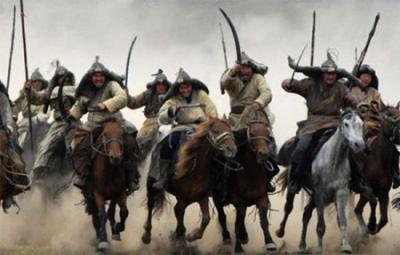If history always felt a little made up and you wished there were more sharply-defined quantitative predictions that could be tested empirically, you are in luck. A new mathematical method has done just that.
An trans-disciplinary team tackled a way to mathematically determine how human societies evolve from small groups to the huge, anonymous and complex societies of today. Their cultural evolutionary model predicts where and when the largest-scale complex societies arose in human history.
They determined that intense warfare is the evolutionary driver of large complex societies.
Simulated within a realistic landscape of the Afro-Eurasian landmass during 1,500 BC to 1,500 AD, their mathematical model was tested against the historical record. During the time period, horse-related military innovations, such as chariots and cavalry, dominated warfare within Afro-Eurasia. Geography also mattered, as nomads living in the Eurasian Steppe influenced nearby agrarian societies, thereby spreading intense forms of offensive warfare out from the steppe belt.

The study focuses on the interaction of ecology and geography as well as the spread of military innovations and predicts that selection for ultra-social institutions that allow for cooperation in huge groups of genetically unrelated individuals and large-scale complex states, is greater where warfare is more intense.
While existing theories on why there is so much variation in the ability of different human populations to construct viable states are usually formulated verbally, by contrast, the authors' work leads to sharply defined quantitative predictions, which can be tested empirically.
The model-predicted spread of large-scale societies was very similar to the observed one; the model was able to explain two-thirds of the variation in determining the rise of large-scale societies.
How the distributions of large-scale polities in the mathematical simulation are remarkably similar to the historical record for each time slice over the period 1,500 BCE to 1,500 CE. Credit: Turchin P, Currie T, Turner E, Gavrilets S
"What's so exciting about this area of research is that instead of just telling stories or describing what occurred, we can now explain general historical patterns with quantitative accuracy. Explaining historical events helps us better understand the present, and ultimately may help us predict the future," said the study's co-author Sergey Gavrilets, NIMBioS director for scientific activities.
Citation: Peter Turchina, Thomas E. Currie, Edward A. L. Turner, and Sergey Gavrilets, War, space, and the evolution of Old World complex societies, September 23, 2013, doi: 10.1073/pnas.1308825110


